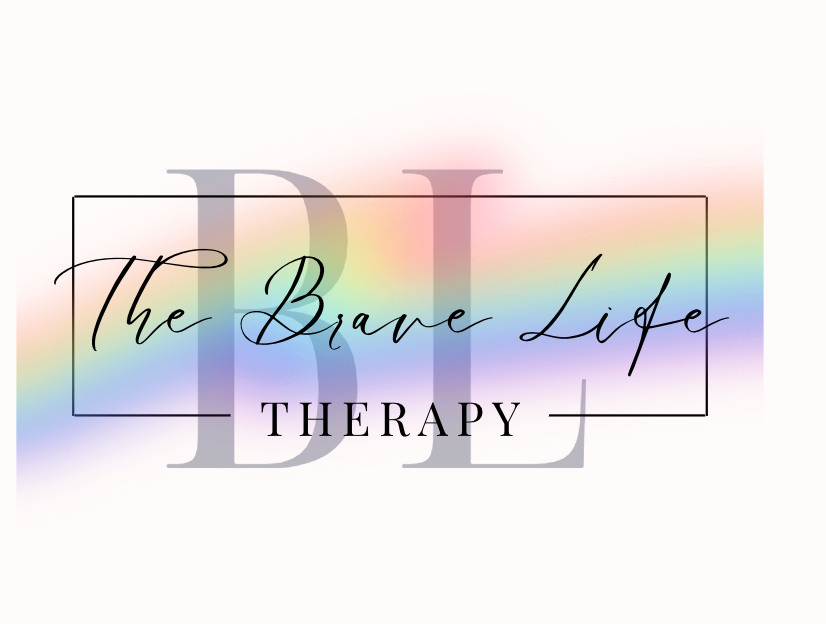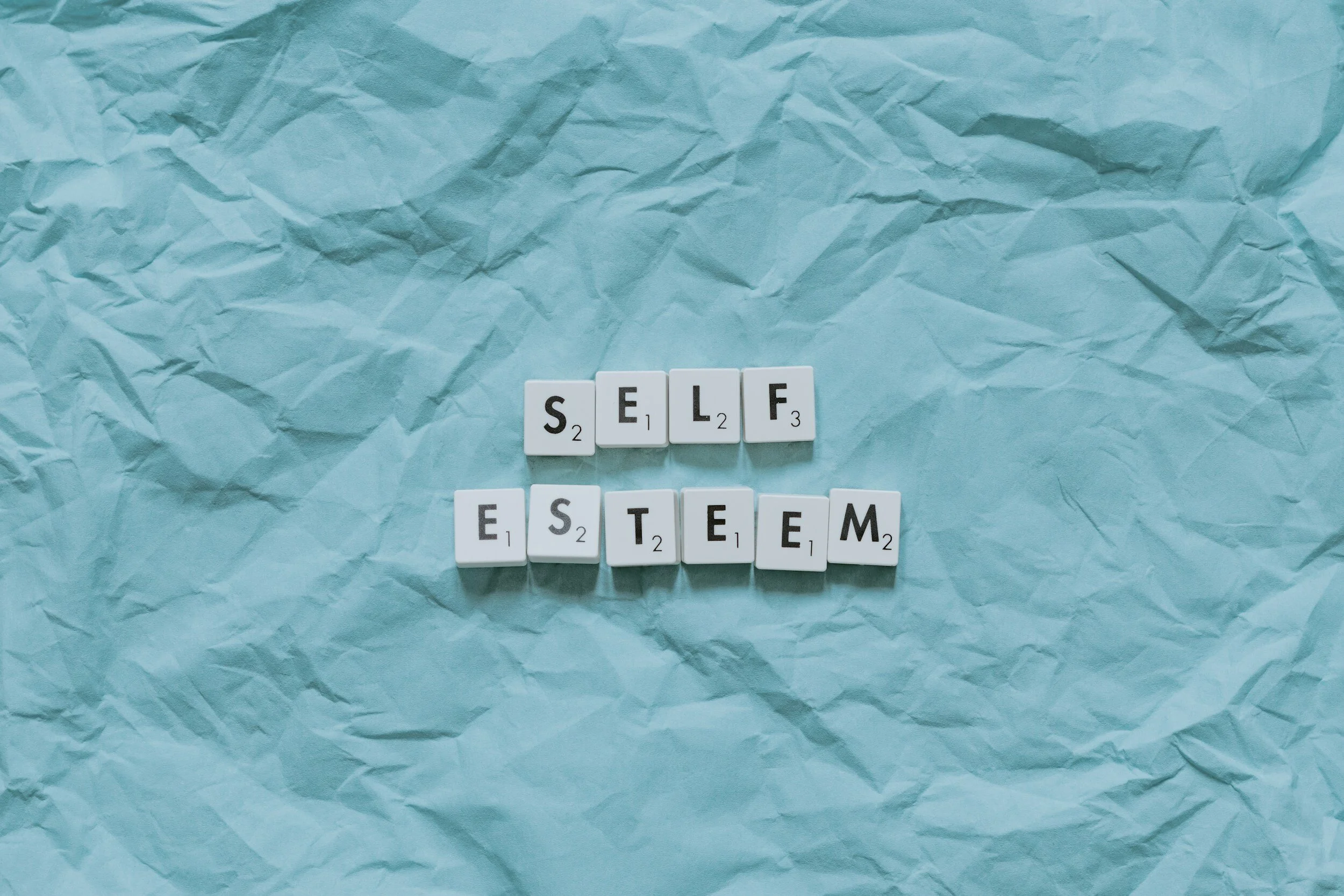Mastering Balance: How to Set Healthy Boundaries in Relationships for Fulfillment and Respect
Looking to cultivate a healthier balance in your relationships? Setting boundaries is key. In this guide, you’ll discover not only how to set healthy boundaries in relationships but also the lasting peace and mutual respect they bring. We explore recognizable situations, unpack the nuances of direct and kind communication, and provide you with the tools needed to assert your space and emotional needs. Start navigating your relationships with newfound clarity and confidence today.
Key Takeaways
Healthy boundaries in relationships are crucial to maintain individuality, mutual respect, and emotional health, requiring clear communication and understanding of personal and shared space.
Emotional boundaries guard against emotional fatigue and stress, and it’s vital to define and communicate them consistently, which may be aided by therapy for trauma, anxiety, depression, or stress.
Boundaries must be flexible and regularly reassessed in long-term and new relationships to adapt to life changes, ensuring they remain relevant and respectful to both partners.
Understanding the Essence of Healthy Boundaries
Healthy boundaries serve as invisible barriers safeguarding our emotional and psychological well-being. They create a safe haven, allowing us to maintain our identity, mental health, and physical well-being without the threat or sense of being overwhelmed. But, setting boundaries is not just about us; it’s also about fostering mutual respect and well-being in our relationships, creating a safe space where both individuals feel seen, heard, and respected. Recognizing healthy and unhealthy boundaries is crucial for maintaining balance in our lives and relationships.
Boundary setting involves various types, from physical boundaries like respecting personal space to psychological ones like respecting differences in goals and dreams. Each of these boundaries plays a vital role in maintaining overall relationship health. The initial step in setting these boundaries involves understanding our personal values, identifying behaviors we find unacceptable, and building the confidence to establish limits. This might involve self-reflection or even seeking advice from friends, therapists, or experts on boundary-setting.
Defining Your Personal Space
Physical space plays a significant role in establishing healthy boundaries. It necessitates an understanding of the equilibrium between physical and emotional boundaries to ensure comfort and security. Recognizing personal space needs is paramount for individual growth, healing, and maintaining authenticity within relationships. Lack of personal space in relationships can lead to negative consequences such as:
resentment
suffocation
codependency
loss of individuality
By expressing preferences for physical interactions and setting limitations around personal space, we reflect our need for personal comfort and well-being. Communication is key here. By clearly communicating why and when personal space is needed within a relationship, we ensure that both parties understand and respect each other’s space requirements. This, in turn, fosters growth and trust within the relationship.
The Role of Mutual Respect in Boundary Setting
Mutual respect is the cornerstone of healthy relationships. It ensures each individual is treated positively, which is essential for establishing healthy boundaries. Setting boundaries while being conscious of a partner’s personal space signifies the valuation of their uniqueness, solidifying mutual respect within the relationship bond.
Mutual respect in relationships encompasses:
Accepting differences
Supporting each other’s goals
Upholding honesty
Willingness to compromise
Honoring set boundaries
Sharing admiration
Being considerate of each other’s feelings and needs
In practical terms, mutual respect includes equal say in decision-making and fairly dividing household responsibilities, which are important boundaries that nurture the respect between individuals in a relationship.
Hence, receptiveness and respect for each other’s boundaries are pivotal, contributing to the fortification of interpersonal relationships while reducing the risk of resentment and feelings of being overwhelmed.
Navigating Emotional Boundaries for Mental Health
The boundaries we set don’t just exist in the physical realm; they extend to our emotional world as well. Emotional boundaries are a key proactive step to manage stress and prevent the production of stress hormones like adrenaline and cortisol. Without these boundaries, we may find ourselves in a state of emotional and physical fatigue, which can affect our overall personal health.
Hence, it’s crucial to establish emotional boundaries that:
Prevent the invalidation of each other’s feelings
Avoid using guilt in interactions
Facilitate mutual respect for individual emotional needs and limits.
In certain cases, therapy can aid in addressing unhealthy boundaries in relationships by:
Assisting in the reprocessing of trauma
Enhancing the individual’s ability to feel safe setting boundaries
Exploring underlying issues like anxiety, depression, and stress.
Identifying Emotional Limits
Being aware of your emotional limits is a key aspect of establishing healthy boundaries. It protects you from repeating negative emotions, thoughts, and behaviors that could harm your health over time. Recognizing emotional boundaries helps you maintain control over your life and prevents you from being taken advantage of, which can lead to feelings of disrespect and being used.
Reflecting on experiences that trigger feelings of discomfort or being overwhelmed is a key step in identifying your emotional limits. By understanding the psychological reasons behind discomfort, you can establish the necessary boundaries to mitigate it. Establishing clear boundaries by visualizing and naming the situations or behaviors that cause stress or comfort can be a useful tool in this process.
Communicating Your Emotional Needs
Once you’ve identified your emotional boundaries, it’s time to communicate them. This process requires:
Consistency in enforcing boundaries
A respectful approach
Introducing boundary adjustments gradually to make the transition smoother
Clearly expressing the connection between certain behaviors, your feelings, and preferred treatment to facilitate understanding.
It’s also important to remember that setting new boundaries might meet with resistance. Some individuals may need time to adapt or may initially respond negatively. Being mentally equipped to face this resistance is part of communicating new boundaries.
Crafting Clear Boundaries in Romantic Relationships
Romantic relationships offer a wonderful path of love, companionship, and growth. Nonetheless, without clear, healthy boundaries, they can also become a source of stress and discomfort.
Here are some tips for setting boundaries in your romantic relationship:
Identify your non-negotiables, such as unwillingness to tolerate dishonesty or disrespect.
Communicate your boundaries to your partner and make sure they understand and respect them.
Agree upon material boundaries regarding possessions and finances to ensure both partners are at ease with the level of sharing.
Regularly reassess and adjust your boundaries as needed to maintain a healthy and fulfilling relationship.
By setting healthy boundaries and maintaining them, you can create healthy boundaries in a relationship that is respectful, supportive, and fulfilling for both partners.
Time boundaries need to be established to manage how time is collectively and individually spent, fostering personal growth. In a romantic relationship, it’s imperative to discuss sexual boundaries to build trust and prioritize consent within the relationship.
Balancing Time Together and Apart
The ‘70/30’ rule acts as a guideline for couples, suggesting an approximate division of time with 70% spent together and 30% apart to maintain a healthy balance. Balancing personal space with shared activities requires setting routines that respect individual interests and comfort levels, including travel and leisure preferences.
Time boundaries within a relationship should be flexible and subject to reassessment, allowing for adjustments that respect each partner’s evolving needs and availability. By making an effort to spend quality time together, balancing their individual pursuits, partners can maintain a satisfying balance in the relationship.
Sexual Boundaries: A Delicate Discussion
Sexual boundaries are personal boundaries that determine an individual’s comfort level with how their body is touched, seen, or engaged in a sexual context. Communicating these boundaries sensitively includes expressing preferences regarding physical touch, specific sexual acts, and any dislikes regarding clothing or body parts.
Open discussions about sexual boundaries are essential for comfort and mutual consent, reflecting mutual respect in a romantic relationship. It is crucial to communicate sexual boundaries before physical intimacy occurs and to remain open to readdressing them as the relationship or circumstances change.
The Intersection of Self-Esteem and Boundary Setting
Self-esteem is a key factor significantly influencing the process of setting boundaries. Our sense of intrinsic value or self-worth is crucial for setting and maintaining healthy boundaries. Individuals who have self-love are more likely to define and uphold personal limits. Self-worth fuels the creation and enforcement of boundaries. Recognizing one’s value often motivates the establishment of clear limits within relationships.
Setting and maintaining healthy boundaries boosts self-esteem by demonstrating self-respect and honoring individual needs and values. By affirming personal needs, feelings, ideas, health, dreams, and well-being, boundaries cultivate a sense of control and empowerment.
Overcoming Low Self-Esteem to Set Boundaries
Often, low self-esteem can act as a hindrance in setting and enforcing boundaries. Individuals with a healthy sense of self-worth are likely to set and enforce boundaries that protect their well-being, while those with low self-esteem may not feel entitled to having boundaries. However, engaging in self-value boosting activities reinforces the significance of maintaining personal boundaries, aiding in overcoming low self-esteem.
To initiate healthy boundary setting, one should:
Assess core values and beliefs
Trust in their right to enforce boundaries
Start with minor boundary changes to build confidence
Be persistent and consistent with boundaries to demonstrate self-respect and deter others from attempting to overstep them.
Strategies to Communicate Boundaries Effectively
Communication is one of the most critical components of setting boundaries. Clearly communicating boundaries involves:
Expressing needs in a direct, kind, and unapologetic manner
Ensuring they are understood and respected
When boundaries are crossed, it is essential to communicate immediately and clearly
Reiterating the boundaries if necessary
Making known the consequences of violations
Setting boundaries should be a two-way conversation, respecting digital privacy, limits on criticism, and involve listening to the needs of others to foster mutual understanding and respect. Preparing to set boundaries includes using ‘I’ statements, being ready to address feedback, and considering the timing and wording of the boundary-setting conversation.
The Power of "I" Statements
‘I’ statements are crucial for clearly and directly expressing personal feelings and needs without blaming the other person. Employing ‘I’ statements aids in creating collaborative discussions by avoiding critical tones and defensiveness, allowing the conversation to be centered on experiences and feelings. Some examples of ‘I’ statements include:
“I feel frustrated when…”
“I need…”
“I would like…”
“I am concerned about…”
Using ‘I’ statements can help improve communication and foster understanding in relationships.
The process of setting boundaries should be handled with empathy, taking into account the feelings of others to ensure mutual understanding is reached. It is important to communicate personal boundaries without appending apologies, maintaining a tone that does not suggest wrongdoing for having such boundaries.
Choosing the Right Moment
Timing is everything when it comes to setting boundaries. When both partners feel relaxed and can focus on the conversation, it is the recommended timing for setting a boundary with a partner. Discussing boundary issues when things are calm ensures that both parties are able to communicate thoughtfully and respectfully.
When introducing new boundaries, being prepared and considering the right timing, along with clear and respectful communication, is essential. Setting boundaries when both parties are calm can prevent the conversation from escalating into a fight and reduce any associated guilt.
Enforcing Boundaries Without Guilt
Enforcing boundaries without feeling guilty is a key aspect of establishing boundaries. Prioritizing personal needs over others’ expectations and learning to say ‘no’ are essential skills for enforcing boundaries and preventing others from taking advantage of one’s time, energy, or emotions. Communicating boundaries directly yet kindly without justifying oneself is paramount to avoid feeling guilty when enforcing them. It’s normal to feel discomfort and guilt when setting boundaries, but understanding that this feeling is normal can help validate your decisions and maintain strong boundaries.
By remembering the negative outcomes of weak boundaries, like stress and resentment, we can strengthen our resolve during the uncomfortable process of enforcing boundaries.
Responding to Boundary Crossings
When boundaries are crossed, it’s crucial to maintain composure and assertively communicate your boundaries without engaging in personal attacks. Reasserting boundaries with added clarity can help prevent further misunderstandings and ensure others comprehend your needs. Setting boundaries can often involve repeating your stance to the same individual, highlighting the recurrent nature of this process.
By showing commitment to your boundaries through actions, such as reducing interaction with those who consistently ignore them, you reinforce the importance of your limits. All boundaries, including sexual, need to be respected, and any sign of coercion must be addressed immediately, emphasizing the seriousness of such violations.
Dealing with Feelings of Guilt
Feeling guilty, selfish, or mean when setting new boundaries is a normal reaction due to their unfamiliarity, not because setting boundaries is wrong. With repeated practice, setting boundaries becomes easier, eventually leading to a decrease in feelings of guilt. Engaging in healthy coping strategies such as meditation, yoga, and journaling can assist in tolerating and understanding emotions like guilt.
It’s also appropriate to apologize for the way a boundary was communicated if done hurtfully but maintaining the necessity and validity of the boundary itself.
Fostering Healthy Relationships Through Boundary Maintenance
Cultivating healthy relationships involves regular maintenance and adjustment of boundaries. Regularly reviewing and adjusting boundaries can:
Promote respect
Prevent manipulation
Set clear expectations
Ultimately bring partners closer together.
It is important to adjust boundaries as circumstances change and relationships grow to ensure that boundaries remain relevant and consider the evolving nature of relationships. Some reasons why boundaries may need to be adjusted include:
Life events such as having children or coping with loss
Changes in personal values or beliefs
Shifts in priorities or goals
Changes in the dynamics of the relationship
By regularly reassessing and adjusting boundaries, you can maintain healthy and respectful relationships.
Shifting boundaries is normal as circumstances change and relationships evolve, and open communication is key in this process.
Revisiting Boundaries in Long-term Relationships
Reassessing boundaries in long-term relationships is essential for addressing changes that come with life transitions, personal growth, or shifts in comfort levels. Life events such as job loss or the arrival of children can necessitate a reevaluation of financial and time boundaries within a relationship. In long-term relationships, boundary maintenance is crucial for maintaining individual identity and autonomy, which is empowering and builds self-respect.
Revisiting boundaries over time helps set and adjust expectations within the relationship and outlines responsibilities toward each other.
Adapting Boundaries in New Relationships
Setting boundaries at the beginning of a new relationship is crucial because it’s easier to establish healthy habits and routines from the start rather than altering them later on. In new relationships, it’s essential to use honest and open communication to articulate personal space needs, aiding both partners in understanding and valuing each boundary. Boundaries are not static; they should adapt over time with the relationship, accommodating changes while ensuring both partners feel heard and their comfort is maintained.
Managing feedback and reactions when setting boundaries is critical to upholding a foundation of respect and comfort within the relationship.
Professional Insights on Healthy Relationship Boundaries
Setting clear boundaries is vital, even in professional relationships. This is particularly true in therapeutic relationships, where boundaries protect the interests of both the practitioner and the client and satisfy ethical and legal requirements. Boundary violations and multiple relationships in therapy can compromise the effectiveness and objectivity of the practitioner, potentially causing harm to the client.
Initial communication of boundaries through the use of contracts and informed consent, including social media and phone communication policies, is effective in setting clear expectations for the duration of the professional relationship. Therapists must:
Be aware of their personal feelings towards clients
Practice appropriate boundaries regarding physical touch with explicit consent
Consider the implications of gift exchanges to maintain professionalism.
Summary
In conclusion, setting and maintaining healthy boundaries in relationships is an essential part of our emotional and psychological well-being. Whether it’s defining your personal space, navigating emotional boundaries for mental health, or crafting clear boundaries in romantic relationships, all these aspects play a crucial role in fostering healthy relationships. Remember, healthy boundaries are not just about setting limits; they’re about maintaining respect, fostering mutual understanding, and promoting personal growth. So, don’t hesitate to revisit your boundaries, adapt them as per your needs, and communicate them effectively. After all, your well-being matters, and setting healthy boundaries is an act of self-care that reflects your worth back to you.
Frequently Asked Questions
What are the 5 boundaries for healthy relationships?
Setting boundaries is crucial for healthy relationships. The 5 boundaries for healthy relationships include physical, emotional, sexual, intellectual, and financial boundaries. These boundaries help create a strong and respectful foundation for any relationship.
How do you respectfully set boundaries in a relationship?
To respectfully set boundaries in a relationship, it's important to be calm, firm, and clear about your needs. Communicate them with honesty and establish reasonable consequences for crossing a boundary, such as ending the conversation when feeling disrespected.
What does a healthy boundary look like?
A healthy boundary looks like stating your preference for physical contact, asking for respect for your personal space, and communicating your expectations and concerns around intimacy. It's important to establish and communicate these boundaries for your own well-being and comfort.
How can I define my personal space in a relationship?
You can define your personal space in a relationship by understanding the balance between physical and emotional boundaries and communicating clearly about your needs. It's important to establish a sense of comfort and security in the relationship.
How important are emotional boundaries for mental health?
Setting emotional boundaries is crucial for mental health as they help manage stress and prevent the production of harmful hormones. Without them, emotional and physical fatigue can take a toll on overall well-being.





